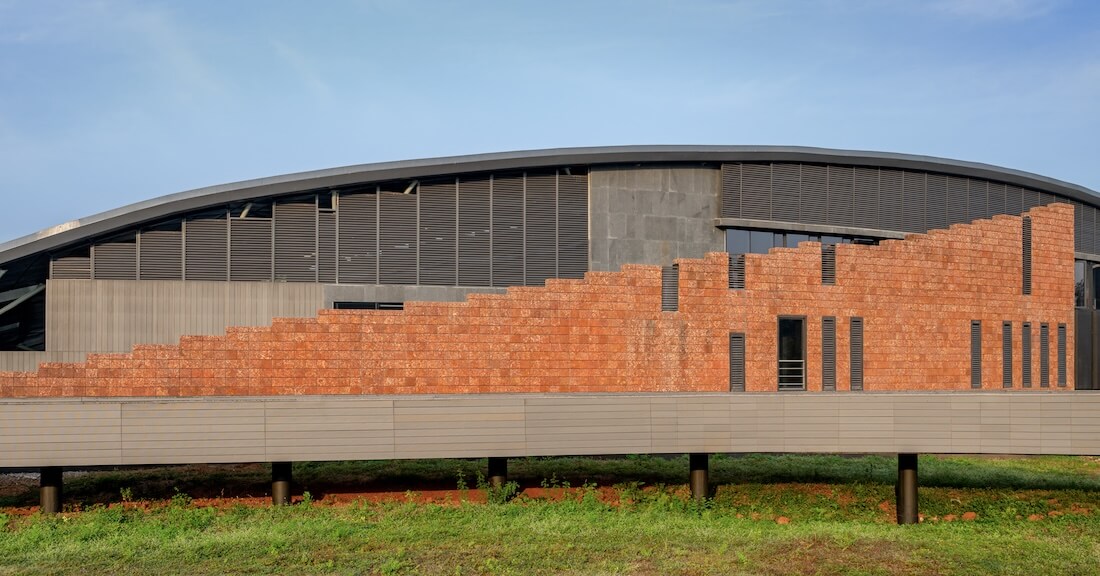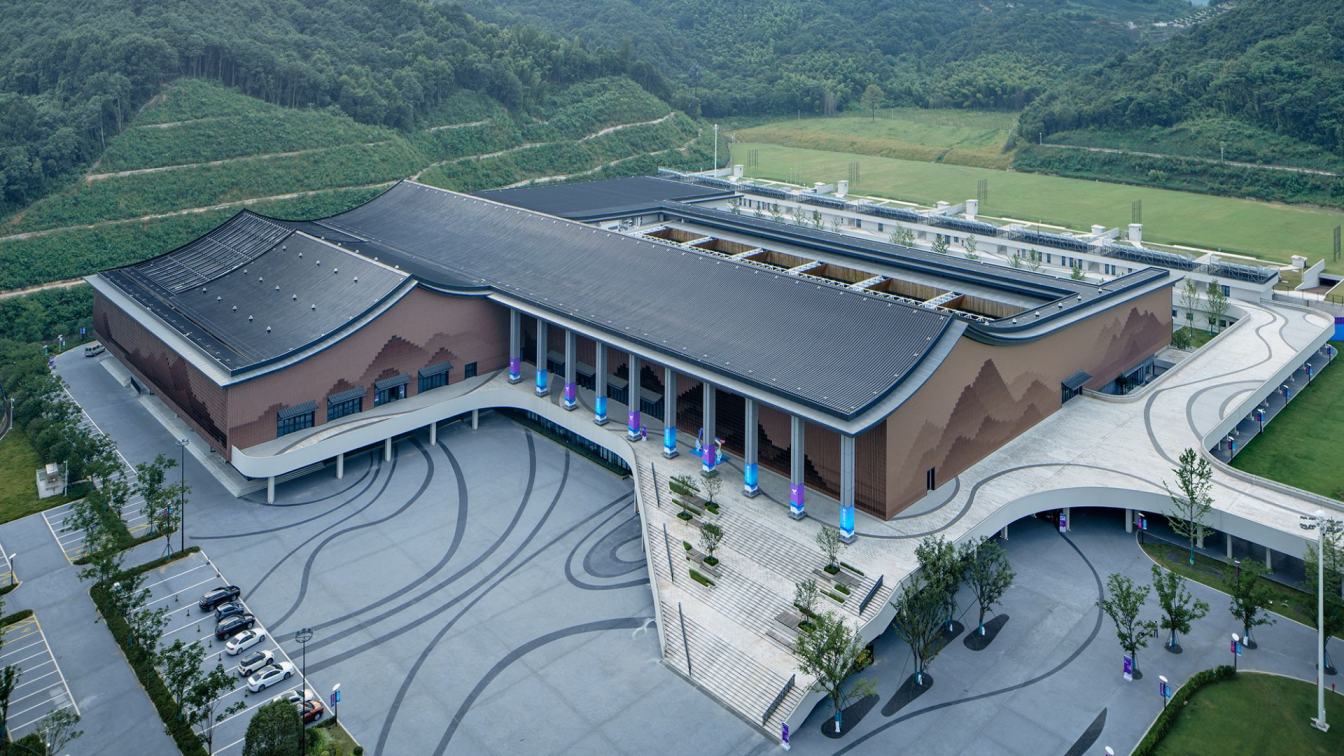MOFA Studio: India as a developing country, is progressing at a significant pace. One of the primary indicators of development in any nation is its education quotient. Our education system is evolving in parallel to other markers such as finance and healthcare nation, and we have begun to prioritize forms of education that, while unconventional by global standards, are highly relevant and rational within the regional context.
Goa, with 70% of its land along the coast, relies heavily on the sea for its economic growth. There's a local saying: "In Goan blood, God mixed some sea salt too." Apart from fishing and tourism being the key industries, marine tourism has also evolved as an independent stream over the years. Recognizing this unique relationship and the need for a formalizing a systematic development in adventure sports and marine tourism, the government decided to establish the largest Water Sports Institute in Southeast Asia in Goa, also ironically, the smallest state of India.
When it comes to Public Institutional architecture in India, governments tend to follow a more pragmatic and understated approach. Interestingly, in the case of design for the National Institute of Water Sports in Goa, the state government released an international level competition, with a dual purpose; firstly, to make a bold iconic statement, that places Goa on a global map and secondly, an expression that treats the institutional architecture beyond the functional pragmatism.
Commissioned through the competition as a winning entry, we were looking for an expression that would integrate the cultural and economic importance of water sports into the educational fabric, ensuring that training and development for every local lifeguard to a tour operator in this field, is state of the art and globally competitive. With the use of local materials at the ground level and a poetic expression of the floating roof, we wanted a balanced relationship between the local ethos and the global approach.

We started by categorizing the functional brief into bigger zoning chunks. While the institutional, administrative, residential and recreational functions retained their individual zones, the space between them would be rather fluid and continuous thereby creating these in between sub functions essential for those informal interactions between various groups of people, defined by their roles on the campus. For the overall language, we searched for an expression that connects the architecture to its broader context, of the sea and the Goan town that resides alongside.
Adventure water sports is perceived as a leisure activity, on the other hand institutes usually tend to box in formal functions from the informal. Here, the surfers, who find the thrill in the sea, in order to retain their attention within the classrooms temporarily disconnected from that rush, we attempted to translate that adrenaline and the constant tension created between the forces of the sea and the surfers engulfed within them. It was important to create this fine balance between the practical day today functionality yet maintaining this constant dynamism.
Building a project at this scale, with an expression that gives due importance to this kind of an institute, in extremely tight Government budgets, came with its own plethora of challenges. The tight budgets and the lowest bid contract, were two constraints that led us to adapt a systematic approach. The fund distribution across the project had to equity based through the choice of right materials and the use of technology was needed to simplify construction methodology literally, like a child’s play. While one part of the office dealt with bureaucratic clearances, the other part was constantly simplifying and innovating newer, simpler methods of construction closer to the hard ground reality.

The architecture for NIWS is inspired from the dynamic nature of the sea. It erupts, rises and folds into a series of trochoidal waves ready to engulf everything that comes its way. Viewed from above, it appears like a mythical creature born from the adjoining Arabian Sea, mimicking its nature. While, from the ground, within its spaces, it appears to be in constant motion with its shifting perspectives. The eye doesn’t rest at a single point, with its multiple point of views and continuous movement spine, the architecture intends to blur the perceptible notions of its elements. The walls, floor plates and the roofs indulge in this fluid dialogue at various points that once rendered by the ever-changing play of light and shadows, it creates this tense, disruptive narrative for its users like a theatre where, motion is a constant and the pause is a search. The architecture thus, becomes a conduit, ensuring it's not a static structure but a lively inspiration for adventurers gearing up for water sports.
The building's constant motion is captured through digital fabrication of the mega roof structure clad using color-coated roofing sheets, allowing cost control in a government project with a limited budget. Resolved as a grid shell structure using trapezoidal paneling; the 4000 Sq m. roof for NIWS drapes the entire complex like a free flowing wave. It is designed as a light weight structure with pressure equalization system. Comprising of more than 15000 pipes of varying length, the structure is constructed in smaller part modules, large enough to be lifted & put in place manually. Over 5000 customized roof panels, each with a unique shape and size, were CNC cut and folded to fit together like a jigsaw puzzle over the large parametric wave roof. The assembly creates continuous gutters, ensuring unobstructed water flow and making it one of the most complex digitally fabricated roofs in India.



























Philosophy:
MOFA is more than 20 years old. We started as a firm that always questioned conventional norms and continued to push the envelope. Every project has been a research and development of a newer language and a system that has helped strengthen the subsequent project giving the firm a solid foundation to stand upon.
We strived for Boldness, whether it’s the structure, unconventional planning to improve the living quality or inventing newer construction systems and materials to push sustainability with longevity.
After analysing our practice and using that learning, MOFA way of working can be summed into three words; “BOLD with Less”.
MOFA has always strived to make clear bold design statements especially when it comes to urban or institutional architecture. We believe in creating spaces that uplift the human spirit from the day today mundane, a kind of architecture that inspires every user, a clear narrative that’s more than just the functional pragmatism.
The “Less” is defined by the resources used in order to execute the boldness in our designs. We believe in optimization of every resource; right from monetary to human, preservation of micro to balancing in sync with macro nature, energy consumption to carbon footprint, under every such vertical and many more undefined, the design is multi-layered, based on clear systematic approaches for every step. We Use highest level of technology available to us to define various systems. These systems range from streamlining the functions to get the most efficient planning that optimizes human energy, to a step by step construction methodology and engineering that optimizes financial resources as well as ensuring the lowest carbon footprint on site.
Principal Architect(s) / Designer(s): Ar. Manish Gulati
Bio: Manish Gulati is a pioneer in parametric and computational design in India and the principal architect and co-founder of MOFA Studio. With over 75 national and international awards, Manish is celebrated for his innovative and bold design approach. He believes that design and technology can go hand in hand, empowering and enhancing architectural creativity. Under his leadership, MOFA Studio has become a leader in contemporary architecture, known for its cutting-edge and holistic designs. Manish is also a respected voice in the architectural community, dedicated to mentoring young architects and advancing the involvement of tech in design.





